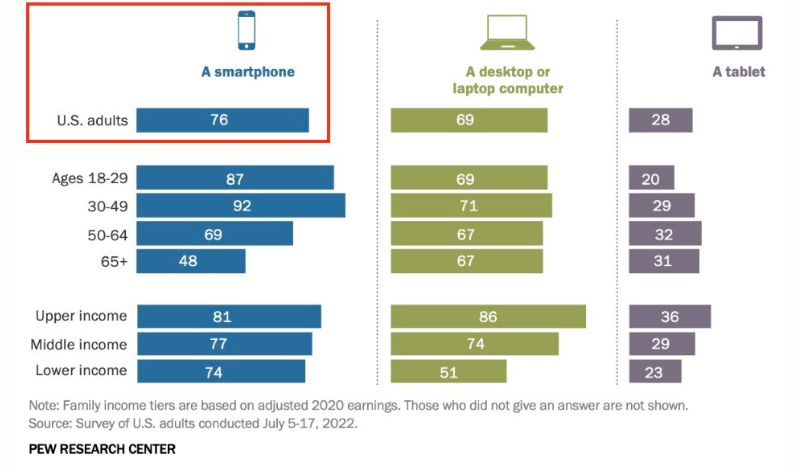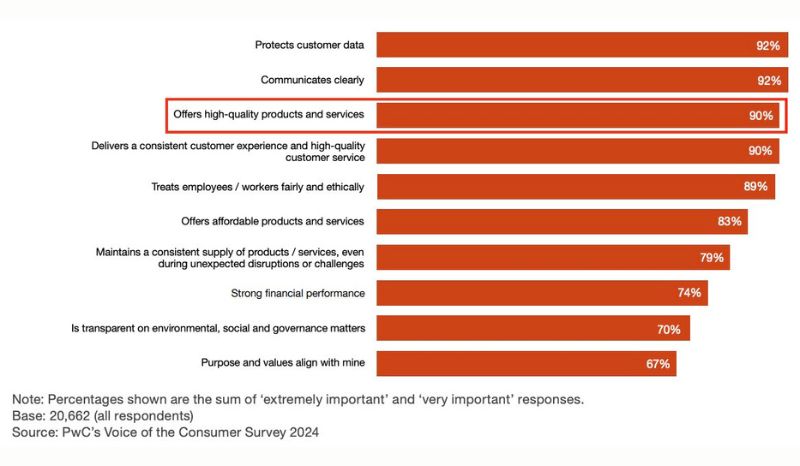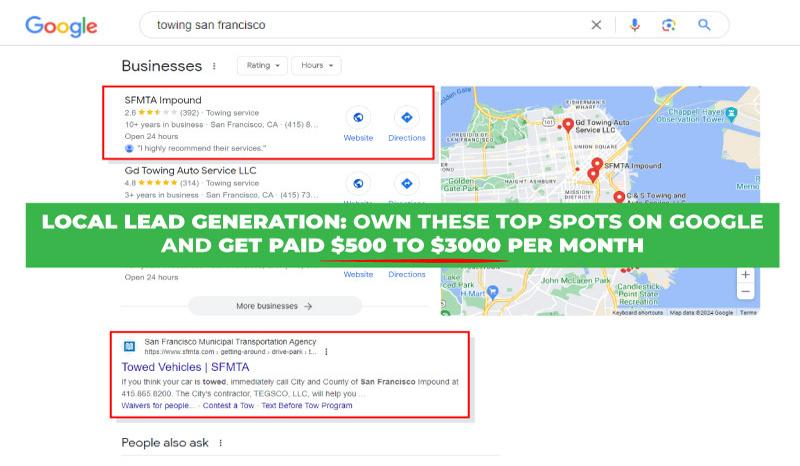How Much Can You Make Selling Digital Products? Most Profitable Online Platforms
Updated On

You can make $100 to $2,000 monthly on average from selling digital products. Top performers earn around $50,000 to $100,000. You get higher income from best-selling digital products like online courses, software, and printable templates. According to Whop, 128 sellers drove $50,000 in sales, while 18 sellers made $250,000 in March 2024.
Erin Confortini made $138,200 in 2024 from selling a Notion planner and a budget template. She earned between $7,000 to $22,000 monthly. Her strategy focused on consistent content creation and offering cheap digital products. Erin boosted her online sales through viral content and social media marketing.

Sara Finance generated $343,000 in revenue in 90 days by selling digital products on Shopify. She uses Canva and Stan Store to improve her sales and marketing. Sara recommends selling around 100 online courses for $500 each to make $50,000 monthly.

Many entrepreneurs earn from online marketplaces like Etsy and Gumroad. You can also sell digital products for free using platforms like HubSpot, Payhip, and Kit. As per David Nge, these companies offer free plans. You only pay 0.75% to 5% in transaction fee per sale.
It’s profitable to sell digital products because profit margins range from 30% to 95%. Plus, e-commerce offers a growing audience base and a high ROI potential. I’ve been renting out digital assets since 2014, so I know how lucrative this industry is. However, actual profits depend on the type of digital product you sell, your target market, and your marketing strategy.
This article talks about how online sellers make money selling digital products on platforms like Amazon KDP and Teachable. We also discuss the 5 factors affecting digital product sales, such as product quality and distribution channels. Plus, we feature Kayla Amma Rose Warner’s testimonial on the profitability of assets like printable PDF files and fillable planners.
How Much Can You Make Selling Digital Products on Top Platforms?
You can make $700 to $16,600 selling digital products on top platforms. These include:
- Etsy - Selling digital products on Etsy generates an average of $700 to $1,999 monthly. Beginners can make around $45 to $200 monthly, while full-time sellers earn $2,000 to over $10,000 per month (Emily McDermott). Etsy is an online marketplace for digital downloads and handmade products. It’s known for planners, printable art, and digital templates.
- Gumroad - This platform drives $100 to $500 monthly on average for new content creators with a small following. Those with experience, like Paul Rose, make over $600. He generated $3,688 within 6 months of joining. Top sellers earn over $16,600 per month. Harsh Strongman averaged around $200,000 yearly for 5 years. Gumroad is a direct-to-consumer sales platform. It’s popular among indie artists and content creators with a solid following.
- Shopify - Marketing digital products through this platform is possible with SkyPilot or Digital Downloads. Beginners can earn $500 to $1,000 per month, while expert sellers make over $2,000 monthly. According to Scott from TraderScooter, he makes $1,000 monthly from selling illustrations online. Shopify is a customizable online store where you can sell digital products like workbooks and website templates.
- Amazon KDP (Kindle Direct Publishing) - Self-published writers can make $150 to $5,000 monthly with this online marketplace. Successful authors earn over $10,000 per month (Publishing.com). Many writers choose Amazon KDP because it offers up to 70% in ebook royalties. According to Gloria Russell, the most popular genres are dystopian, fantasy, and science fiction.
- Teachable - Coaches and mentors generate $500 to $1,000 for new course launches. Some content creators like Ryan Ford make $5,000+ monthly. You can scale this to over $10,000 by offering online courses, digital products, and coaching services. Teachable is a famous e-learning platform for motivational speakers, industry leaders, and more. Other known online educational services include Kajabi and Udemy.
How Your Target Audience Affects Your Earnings From Selling Digital Products
Identifying your potential customers is important because they directly contribute to digital product sales. According to the Data & Marketing Association, customer segmentation boosts revenue by 760%. You can choose your target market based on these factors:
- Demographic - You need to determine the spending power of your potential customers before creating your digital products. For example, Gen X individuals can drive $5,000+ in monthly revenue compared to millennials and Gen Z buyers. As per Tidio, they spend an average of $70,000 annually on digital products. Consider how your offerings will fit your customer’s gender, marital status, or age group. An Affilinet study found that 84.3% of men aged 25 to 49 buy products online, compared to 77% of women.
- Behavioral - This involves online activity, purchase history, and buying platforms. Analyze customer behavior and identify patterns you can take advantage of for better sales. A good example is the 2022 Pew Research Center study, which reveals that 76% of American adults buy products online using a smartphone. It shows how profitable it is to target mobile shoppers. You can make $2,500 yearly from this customer segment (Cropink).

- Psychographic - You must understand how your target audience thinks, their lifestyle choices, and their interests. Pick a customer segment that sees your digital product as something they need. For example, self-development online courses increased by 408% post-pandemic (Whop). This drove many online coaches like Amy Lee and Sakshi Garg to develop programs that fit this niche. You can make 5.55% more revenue yearly (Precedence Research).
- Geographic - This involves an individual’s city, region, or country. According to Agency Pizza, the U.S. has the highest potential for digital product sales, with a 60.3% revenue share. This is followed by Japan (12%), Canada (5.5%), and Germany (4.3%). You need to focus on locations with the highest demand for your digital products.
Does Digital Product Quality Impact Your Sales Potential?
Yes, digital product quality impacts your sales potential, with 90% of the 2024 PwC consumer survey respondents considering product and service quality to build customer trust. Creating high-value, relevant digital products also improves customer retention and brand differentiation. This happens when repeat customers publish positive reviews about your digital products. According to WiserNotify, consumers will spend 31% more on highly rated digital products, while 86% think twice of buying from websites with negative reviews.

Selling high-quality digital products builds your social proof. You also drive better traffic from word-of-mouth referrals. This way, you can establish premium pricing while reducing customer support costs. A Redditor consistently makes 4 to 5 figures selling digital products that are high-quality, trendy, and unique.

Is Pricing Strategy Pivotal to Your Digital Product Profit?
Yes, pricing strategy is pivotal to your digital product’s profit because it determines your business’ long-term sales and success. According to McKinsey & Company, the right pricing strategies drive a 2% to 7% improvement in ROI. Consider product value and customer demands when pricing your digital assets. You can either sell low to attract a high volume of customers or sell at a premium price for high-value products.
Think Media Podcast generated $546,586 by selling a YouTube course for $27. They created a low-priced digital product with massive value to attract their potential customers.
This Redditor suggests running short-term sales to capture competitor audiences. You can give a 50% discount on your digital product for a limited time to entice buyers to act quickly. This increases your sales while building brand awareness.

Other popular pricing models for digital products are:
- Subscription pricing - This drives a consistent monthly or yearly income. According to Market Research Chicago, consumers spend around $86 monthly on subscription services. SaaS products are popular for their subscription-based pricing.
- Freemium model - This offers free basic services to customers. Advanced features require an upgrade to a premium price. Some well-known products are Canva, Spotify, and LinkedIn.
- One-time purchases - This involves paying once for a product to gain lifetime access. Adobe Stock licenses and ebooks are good examples of this pricing model.
- Bundles - This entices customers to purchase multiple products at a more affordable price. A Forrester research found that bundling digital products improves average order value by 20% to 30%. Plus, it increases customer lifetime value by 2.7x (Frizbit).
How Sales and Marketing Improve Your Digital Product Income
Promoting your online store and digital products creates brand awareness, generates leads, and nurtures customer relationships. Sales and marketing strategies help businesses engage with their target audience and build trust. Online campaigns also provide usable data to personalize your advertisements and promotions. According to Spotio, 54% of sales leaders believe that sales and marketing initiatives improve revenue growth. Some proven sales and marketing channels are:
SEO - This involves optimizing web design and content to rank higher on search engines. Using SEO for marketing is free, which gives you higher profit margins in the long run. However, it takes 3-6 months to see results.
Ryan Robinson used SEO to grow his audience to 500k readers monthly. He makes $25,000 to $55,000 monthly from selling online courses, ebooks, and other affiliate products.

Paid advertising - This method maximizes social media platforms and search engines to promote digital products to specific audiences. You can generate more sales in a short time, but you pay for ongoing advertising.
PH Digital scaled their e-commerce client’s monthly revenue from $87K to $237K with paid ads. They drove significant earnings from Meta and Google platforms.Email marketing - This strategy utilizes an email list to communicate with potential customers directly. It offers better campaign personalization for higher conversion rates. A Litmus survey revealed that email marketing generates an average of $36 for every $1 spend.
Troy Ericson helped an online business earn $38,000 more per month by reviving dead email lists. Now, his company makes around $230,000 monthly by helping digital product sellers generate sales with email marketing.

Social media marketing - This uses social media networks to attract and engage your target market. Some common campaigns include posts, photo carousels, and online polls. You can get better profit using social media platforms because they’re free.
Sasha Pyfrom maximized Instagram to market her Etsy products. Within two weeks of posting, her sales went from 4 to 150 sold items monthly.
What Distribution Channels Offer the Best Digital Product Sales?
- Direct sales channels - This offers 80% to 95% profit margins because you don’t rely on third-party platforms. You can sell your digital products directly to your customers through sales outreach, a website, or email lists. Scott, one of our students, secured a $2,500 deal to build a local lead gen website. The client found his digital product on his website.

- Third-party online marketplaces - These platforms provide more opportunities for product sales because of their established audience base. Their built-in systems and automations streamline how you sell multiple digital products However, platforms like Amazon and Udemy charge around 10% to 50% for fulfillment costs and revenue share. One Redditor mentioned earning $200 monthly selling digital downloads for cake toppers on Etsy.

- Affiliate networks - This channel connects digital product sellers with affiliates who create engaging content that drives more sales. It offers a faster way to improve online reach while reducing marketing costs. But, affiliate networks often have one-time or monthly fees, affiliate commission shares, and setup fees that range from 1% to 20%. Some popular affiliate networks are ShareASale, Amazon Associates, and Awin.
Choose the best platforms and channels to increase potential downloads, royalties, and sales. This also depends on the digital products and services you sell. For example, you can promote your ebooks and digital publications on Amazon since they offer up to 70% royalties. You’ll have a bigger audience on Creative Market or Etsy for selling design templates and assets. You can also expand your distribution channels to improve your buyer base and revenue potential.
Real-Life Testimonials From People Making Money Selling Digital Products
One Redditor made $634 selling digital products online. This business model is profitable if sellers use proven content creation and marketing strategies. Another Reddit user revealed generating $17,000 in one month despite being a stay-at-home mom. She sells digital products in Stan Store and Etsy.


In 2018, Kayla Amma Rose Warner made $45 in her first month selling business planners on Etsy. As she gained experience, she hit $1,000 in revenue within four months. In 2020, Kayla earned $93,534 in total revenue from 5,458 online orders. Her strategy focused on providing products that resolve her customers’ concerns. She grew from printable PDF files to digital planners and fillable planners.

Diamond Lee drove $19,983 in sales from selling a 20-page ebook on ClickFunnels within 59 days. She expanded her digital offerings from ebooks to sales funnel templates and online courses. Now, Diamond has over 10,000 students on Thinkific.

One Redditor said that earning $1,000 weekly is not possible when selling digital downloads. Other sellers copy best-selling products and sell them at a lower price.

Another individual mentioned the saturation of Redbubble, Etsy, and Amazon KDP. Many entrepreneurs sell on these platforms, but only a few make money from them. You can earn from selling digital products, but it’s not a passive income source.


What are the Most Profitable Digital Products You Can Sell Online?
The most profitable digital products you can sell online are:
- Local lead gen websites - Renting out niche-specific sites is the most lucrative way to make money with digital products. This method generates $500 to $2,000 per site. Local lead gen experts make over 10 websites to drive around $5,000 to $20,000 in passive income monthly. These service sites are popular because they offer 80% to 95% profit margins. Some well-known local niches include home maintenance, junk removal, and moving services.
- Online courses and coaching programs - These products drive $1,000 to $10,000 monthly on average (Kajabi). The 2024 State of Creators Report reveals that 40% of successful course creators make 6 figures within two months. Educational digital content is in demand because it generates recurring income. Some popular niches are AI and machine learning, digital marketing, and fitness.
- Ebooks and digital printables - According to Publishing.com, sellers earn an average of $2 to $5 per ebook purchase. This translates to around $1,800 monthly in royalties. Ecommerce Bonsai also states that selling white papers, guides, and other PDF copies drives $1,000 per month. Experienced writers like Carol Tice earn up to $45,000 within six years. Many individuals sell ebooks and digital publications because of their low production costs.
- Graphics and digital templates - According to Sandra Di, you can earn $7,000 to over $50,000 monthly. These include printable vintage wall art, wedding templates, and educational activity sheets. She also recommends using Midjourney, Kittl, and Canva. These digital products are famous because you can use AI to create unique graphics and templates.
- Memberships - Uscreen reveals that content creators on its platform earn an average of $12,000 monthly. However, Gillian Perkins shares that a realistic revenue from digital memberships runs around $10,000 per month. This digital product is in demand because creators can price their subscription offerings at a low cost. Some of the best platforms for selling content online are Thinkific, Pensil, and Kajabi.
Is It a Good Idea To Invest in Digital Assets for the Future?
Yes, it’s a good idea to invest in digital assets for the future because of their high demand globally. In fact, GWI reveals that 55.8% of consumers aged 16 and above purchase digital goods at least once a week. Online businesses generate passive income with low operational costs. All you need is a laptop and an internet connection. Unlike selling physical products, you don’t need inventory and a big initial investment. Use free software like The Leap and DesignWizard to create online courses, digital templates, and more.
Many entrepreneurs also use Master Resell Rights or Private Label Rights to buy digital products to resell to their target audience. This gives them more control over the digital goods they sell and the flexibility to venture into other online businesses. However, customers don’t easily trust unknown sellers or highly marketed content. You need to build credibility and brand awareness to drive consistent sales and revenue.
The Best Source of Passive Income: Local Lead Generation vs Other Digital Products
Local lead generation is a predictable, sustainable, and scalable source of passive income. You make money by forwarding leads to local businesses through rank and rent. It’s easier to attract and capture potential clients because every business needs customers. Plus, localized markets have less competition than selling other digital products globally. Online courses, ebooks, templates, and wall art have a saturated seller base. Anyone with basic skills can create digital assets and sell them online.
I’ve been selling digital products for over 10 years. Marketplaces like Envato, Shopify, and Podia are beginner-friendly platforms for designing and marketing your digital assets. However, they have hundreds of thousands of sellers because of a low barrier to entry. It may be easy to develop new designs using AI-powered tools like ChatGPT, but competing with well-known stores is another thing.
Alternatively, local lead generation is easier since you’re dealing with local niches. It involves picking profitable services and building websites. Then, create high-quality, domain-relevant content to organically boost your rankings on search engines. Once they rank, your site generates leads that you can forward to local business owners. You can rent out each website for $500 to $2,000.

Making money with other digital products requires significant time and effort with continuous posting or paid ads. With local lead gen, you drive unlimited recurring monthly income.

Follow Me
Ippei Kanehara
Founder/CEO
$52K per month providing lead generation services to small businesses
Ippei.com is for digital hustlers, industry leaders and online business owners.
His #1 online business recommendation in 2024, is to build your own lead generation business.
